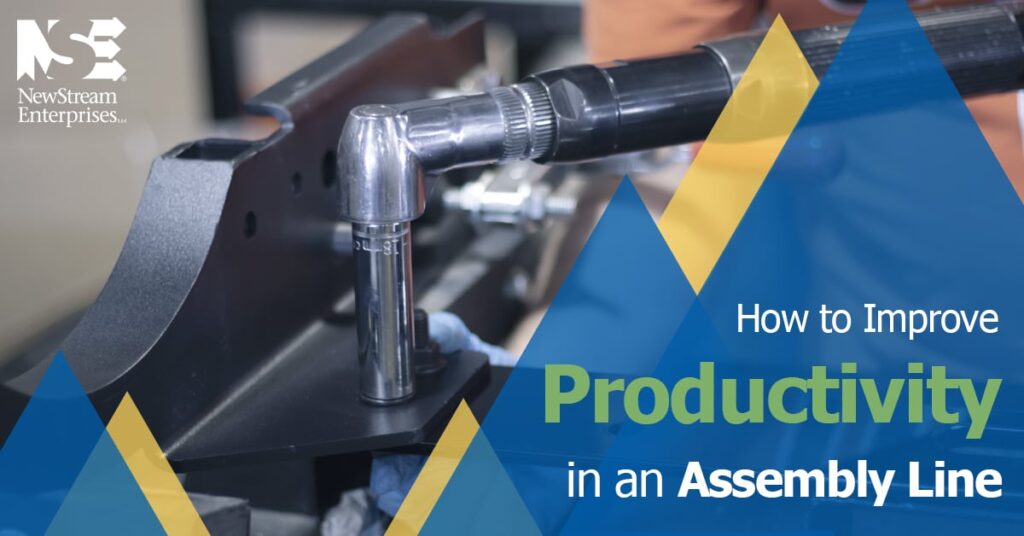At the turn of the twentieth century, the assembly line was created, an innovation in manufacturing so powerful that it is still used to this day. Even though the assembly line has become a mainstay in manufacturing for over 100 years, there are still aspects of the process that can be continually improved upon and optimized to reduce inefficiencies and waste. Productivity can be measured by the units of work produced per unit of time using raw materials and can be raised or lowered depending on how streamlined the assembly line is. Low productivity levels can be extremely detrimental to the manufacturing process and ultimately a company’s profitability, so how can we improve productivity in an assembly line?
Define Goals and Objectives
In order to even begin to streamline any process, a business needs to first think about attainable goals that need to be achieved. Trying to change said systems without any definable objectives will end up with messy results, which may hurt the assembly line and production costs more instead of improving anything. In a production setting, this may start with wanting to minimize the number of workstations or increase the production rate of a product.
Why does this need to happen for assembly line productivity?
- To identify and eliminate bottlenecks in the workflow
- To minimize wasted time being idle while constructing a product
- To build competence with machinery and technological processes
- To evenly spread-out work among employees on the assembly line.
- To optimize the production process through usage of manual labor and automations

Run the Numbers
Always be sure that before any changes are made concerning the assembly line production process, run the plan by accounting and payroll to make sure it is financially feasible first. This will be an important step in assessing the cost of current operations versus the ideal cost objectives. You do not want to start making adjustments on the manufacturing floor and have none of the changes be cost effective in the long run. This is an often-rushed part of improving productivity in the assembly line and can lead to assembly lines being overloaded and understaffed. Forward thinking manufacturers will check in and “run the numbers” on a regular basis to make sure that all changes, past, present, and future, all account in increasing cost savings and profit growth.
5 Steps to Optimizing the Workflow
1. Small Improvements at a Time
Pay attention to the small details of your product assembly. Is there any wasted movement or unnecessary straining to reach materials or tools? Making small changes such as moving all materials to be closer to the employees saves time, and time adds up over days, weeks, and months of work. The potential cost savings of streamlining the assembly process and reducing the small inefficiencies is astronomical for increased productivity.
2. Safe Working Environment
Having an open workspace improves manufacturing productivity by allowing for more safety measures to be put into place, as well as allowing management to keep track and measure all progress made on assembly line production. The work area needs to be safe and comfortable for a positive impact on production. An open workspace also allows for easier identification of bottlenecking of material flow. This workspace practice also accounts for allowing open access to necessary materials and tools for employees.
3. Line Balancing
Evenly distribute tasks across the entire workstation so employee idle time can be minimized. Whether this means placing people with more equal skill levels in different areas, or simply allocating equal amounts of materials to different workstations, be sure to know your employees and their skill levels. Management needs to be strategic in worker placement in order to reap the maximum amount of efficiency from the assembly process.

4. Communication Skills
Explaining the company’s long and short-term goals to employees boosts productivity, morale and gives team members incentive to give more effort in the assembly line process. Be sure to set realistic expectations, but also be willing to provide a reward to those who exceed those expectations.
5. Technology Usage
Make sure employees know about how the production technology and machinery works and its value to the product line. Additional employee training and quarterly equipment knowledge checks are helpful tools to ensure all usage of technology is optimized.
Implementing an Open Book Management Business Practice
A great way to improve productivity to an assembly line is to implement open-book management (OBM) in your organizational structure. OBM provides the opportunity to treat employees like owners in the company by sharing information, creating business literacy, and setting accountability for everyone in the company. The OBM system, created by Jack Stack, CEO of SRC Holdings Corporation, focuses on WHY continual improvements are made, then moves to HOW these changes can be implemented. Both managers and employees alike have a stake in the “game” of business. Employees are treated as owners, which incentivizes work ethic and productivity.
All businesses have potential, but it boils down to how well they manage their potential with increasing productivity that truly makes a company thrive. Defining future goals and outcomes, running the numbers, then taking the small steps to optimizing the workflow are ways for assembly line production methods to become streamlined and efficient.
At NewStream Enterprises, LLC, our product assembly process utilizes an experienced assembly-line team, along with error-proofing technology and infrastructure to efficiently piece together parts for a finished product. After leaving the assembly line, products go through a packaging process where custom labeling, barcoding, crating, relabeling, sorting, staging, and inspection of items for distribution take place. Product assembly services can also include other value-adds like pack-out services and kit assembly services.
Our assembly services have already been optimized for productivity and can help you achieve your business goals. Get in touch to find out how.


